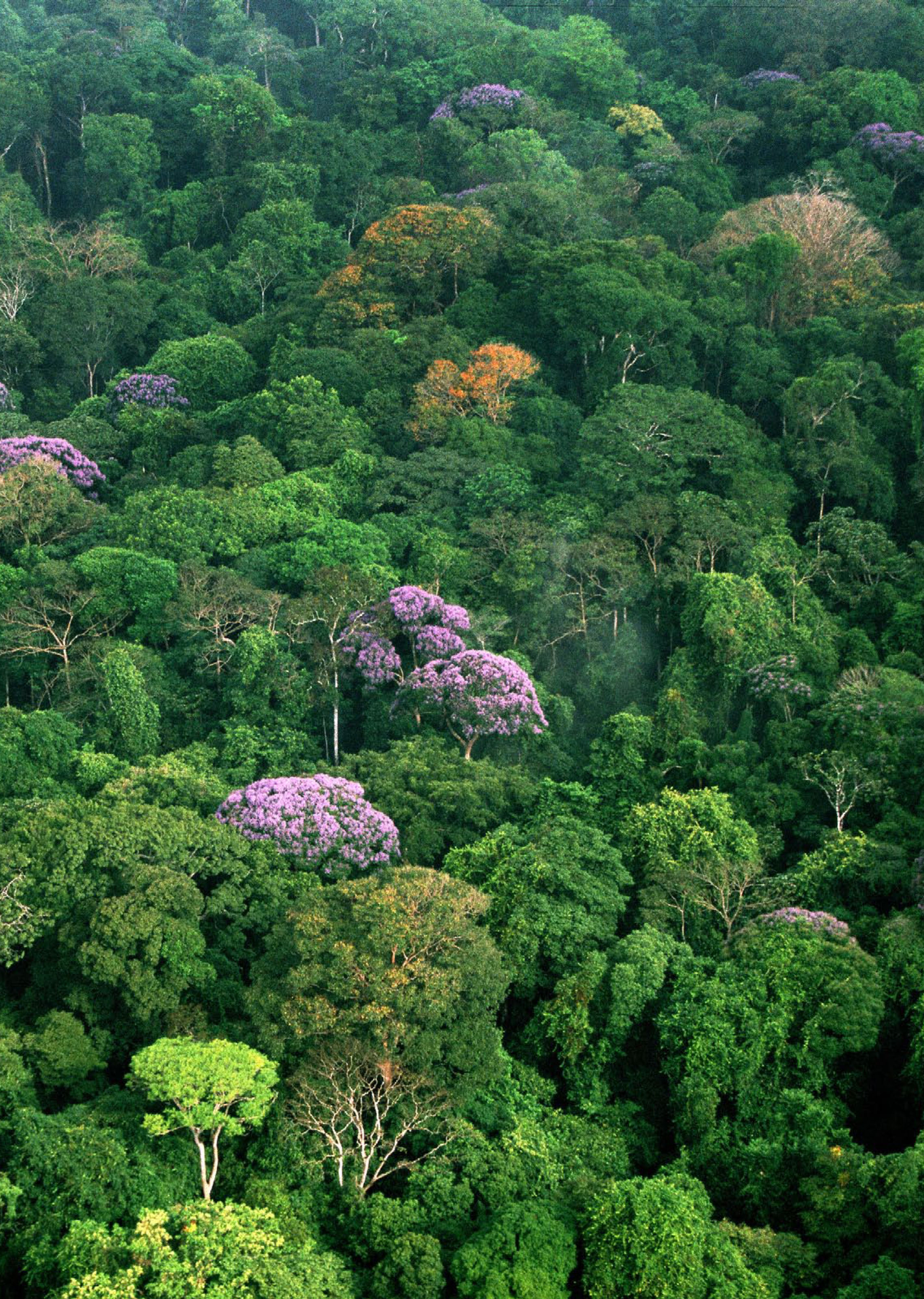The tropical forest canopy, often referred to as the upper layer of lush vegetation, is a vital component of the Earth’s ecosystems and plays a significant role in carbon storage and forest health. As the frontline defense against climate change, these canopies not only support diverse wildlife but also help regulate global temperatures by mitigating heat waves. Recent advancements in LiDAR technology, especially through NASA’s GEDI initiative, have provided unprecedented insights into the dynamics of these canopies. Studies utilizing this technology reveal how environmental factors, such as drought and temperature fluctuations, are influencing canopy height across the globe. Understanding these changes is critical for conserving these essential habitats and ensuring their role in combating climate change is preserved for future generations.
The upper layers of tropical forests, commonly known as the canopy, represent a crucial ecological element in maintaining biodiversity and stabilizing the climate. This elevated vegetation layer holds immense significance for carbon sequestration and is essential for assessing forest vitality. Innovative remote sensing techniques, like those implemented in NASA’s GEDI project, have allowed researchers to thoroughly analyze how various climate influences affect these crucial ecosystems. By employing cutting-edge technologies, scientists can now measure changes in canopy height, revealing significant insights into the health of these forests under climate pressure. Recognizing the importance of these lush treetops is imperative for the future management and conservation strategies aimed at safeguarding our planet’s lungs.
The Importance of Tropical Forest Canopy in Climate Action
The tropical forest canopy plays a pivotal role in mitigating climate change and supporting biodiversity. Acting as the Earth’s lungs, these canopies absorb significant amounts of carbon dioxide, thereby helping to regulate global temperatures. Their height and structure directly correlate with forest health, as taller canopies tend to exhibit greater biomass density and carbon storage capabilities. As climate change accelerates, understanding how variations in canopy height affect carbon sequestration will be crucial for developing effective conservation strategies.
NASA’s GEDI technology provides invaluable insights into the structure of these canopies, allowing researchers to assess how environmental factors like drought and elevation impact forest health. For instance, the study highlighted that tropical forests in the southern Amazon face higher risks of canopy reduction due to prolonged dry seasons. These findings underscore the urgent need for conservation efforts that prioritize maintaining and restoring these critical ecological structures, which play a crucial role in combating climate change.
Utilizing NASA GEDI for Forest Health Monitoring
NASA’s Global Ecosystem Dynamics Investigation (GEDI) employs cutting-edge LiDAR technology to monitor forest health from space. By analyzing canopy height, leaf density, and biomass, scientists can deduce the overall health of tropical forests, which are essential for biodiversity and climate mitigation. The ability to conduct expansive studies across various global regions offers a comprehensive overview of how forests respond to environmental changes, placing significant emphasis on the role of climate factors on forest dynamics.
The insights provided by GEDI have major implications for understanding the impact of climate change on forest ecosystems. A recent study revealed how conditions such as prolonged dry seasons drastically affect canopy height in areas like the southern Amazon, potentially leading to decreased carbon storage abilities. With the data gathered through GEDI, we can identify areas most at risk and advocate for necessary policy changes aimed at safeguarding these vital ecosystems.
Challenges Facing Tropical Forests Amid Climate Change
Tropical forests are increasingly threatened by climate change, with many regions experiencing more extreme weather conditions. Prolonged dry seasons, as highlighted in recent studies, particularly affect the southern Amazon’s forest canopy height, raising concerns about carbon storage capabilities. As these forests evolve, their ability to act as carbon sinks diminishes, posing threats not just to biodiversity but also to global climate stability.
Additionally, the effects of climate change vary significantly across different tropical regions. For instance, while elevation is a key influencing factor in the central Amazon, the dry season plays a more critical role in other areas. This variability necessitates a nuanced approach to monitoring and conserving tropical forests, taking into account localized environmental factors that drive changes in forest health.
The Role of LiDAR Technology in Forest Conservation
LiDAR technology represents a significant advancement in understanding and preserving tropical forests. The precision of NASA’s GEDI allows researchers to capture detailed data on canopy height and structure, providing a clearer picture of forest health compared to traditional methods. By revealing the intricate relationship between climate variables and canopy dynamics, LiDAR technology aids in identifying areas that require urgent conservation measures.
As we face escalating climate challenges, the insights from LiDAR measurements can help prioritize conservation initiatives. These efforts are vital for maintaining the delicate balance of ecosystems that not only host diverse species but also contribute to carbon storage and climate regulation. By leveraging this technology, scientists and policymakers can develop informed strategies to protect vulnerable forest regions from the adverse effects of climate change.
Understanding Forest Canopy Height Variation
Research into the factors influencing tropical forest canopy height has revealed significant variations driven by climate, topography, and soil properties. As noted in the recent NASA GEDI study, nearly three-quarters of the variability in canopy height can be attributed to these environmental controls. This information is essential for assessing the ecological value of different forest areas, particularly in relation to their carbon storage capabilities.
The implications are profound. Forests with higher canopies typically support greater biodiversity and are more effective at sequestering carbon. As climate change continues to reshape our environment, understanding these variations is crucial for formulating effective conservation strategies. Protecting taller, healthier canopies becomes paramount in the battle against climate change, highlighting the need for ongoing research and monitoring.
Conservation Strategies for Vulnerable Tropical Forests
The vulnerabilities of tropical forests, particularly in regions like the southern Amazon, necessitate immediate and effective conservation strategies. As studies indicate that these forests may face considerable reductions in canopy height due to climate change, prioritizing conservation efforts in the most affected areas is critical. Implementing policies that address deforestation, promote reforestation, and restrict land-use changes can help mitigate these risks.
By utilizing NASA’s GEDI data, policymakers can target specific regions that are predisposed to severe climatic impacts. With a more informed understanding of forest dynamics, conservation initiatives can be tailored to strengthen resilience against climate-induced stresses. This proactive approach not only protects biodiversity but also ensures that these forests can continue to serve as vital carbon sinks in our fight against climate change.
The Impact of Prolonged Dry Seasons on Canopy Health
Recent research indicates a direct correlation between prolonged dry seasons and declining canopy health in tropical forests. The southern Amazon, for example, is particularly susceptible to these changes, which could lead to substantial reductions in canopy height. This decline has critical implications for forest ecology, as a shorter canopy can result in diminished carbon storage capacity and increased vulnerability to temperature fluctuations.
Understanding how dry seasons affect forest structure is crucial for developing effective management strategies. As climate projections indicate longer dry periods, the urgent need for monitoring and mitigating their impacts highlights the importance of leveraging technologies like NASA’s GEDI. By assessing how these environmental stresses influence canopy dynamics, we can better prepare for the future of tropical forests in a changing climate.
Future Directions in Tropical Forest Research
As scientists continue to explore the complex interactions between climate change and tropical forest health, future research must expand beyond primary forests. By investigating secondary forests and woodland areas, researchers can gain a more comprehensive understanding of how these ecosystems contribute to carbon storage and biodiversity. This broader perspective is essential for creating holistic conservation strategies that ensure the sustainability of tropical forests.
Additionally, integrating findings from advancing technologies like LiDAR into policy discussions will be crucial. By creating a data-driven framework for understanding forest vulnerabilities, researchers can support efforts to prioritize protection of critical areas. This ongoing research will be integral in shaping policies that address both conservation of biodiversity hotspots and the necessity of mitigating climate change.
The Significance of Sustainable Practices in Forest Management
Adopting sustainable practices in forest management is vital for safeguarding tropical ecosystems. Practices that prioritize conservation, like selective logging or agroforestry, can minimize environmental impact and promote healthy forest regeneration. Integrating these sustainable practices with findings from NASA’s GEDI technology allows for more effective monitoring and management of forest health, ensuring that carbon storage capabilities are maintained.
Moreover, engaging local communities in sustainable forest management enhances socio-environmental benefits. Communities play a crucial role in protecting these vital resources, and their involvement in conservation efforts leads to better outcomes for both biodiversity and climate resilience. By promoting a sustainable approach to forest management, we can foster a more harmonious relationship between people and nature.
Frequently Asked Questions
What is the role of the tropical forest canopy in carbon storage and forest health?
The tropical forest canopy plays a crucial role in carbon storage and overall forest health. Taller canopies are associated with greater above-ground biomass and enhanced carbon sequestration capabilities. As forests are often referred to as ‘Earth’s lungs’, maintaining a healthy canopy is vital for climate balance and ecosystem productivity.
How does NASA’s GEDI technology measure changes in the tropical forest canopy?
NASA’s Global Ecosystem Dynamics Investigation (GEDI) utilizes LiDAR technology from the International Space Station to measure variations in tropical forest canopy height. This advanced laser technology enables researchers to obtain comprehensive data on canopy structure, which is essential for understanding how climate change affects forest health.
What environmental factors influence the height of tropical forest canopy impacted by climate change?
Environmental factors such as climate, topography, and soil properties significantly affect tropical forest canopy height. Research indicates that elevation, dry seasons, and solar radiation are the most dominant factors determining changes in canopy height, especially in areas facing prolonged drought as a consequence of climate change.
What are the implications of reduced tropical forest canopy height due to climate change?
Reduced tropical forest canopy height can have dire implications, including decreased carbon storage, loss of biodiversity, and diminished ecosystem services. As climate change leads to longer dry seasons, areas like the southern Amazon face vulnerabilities that could significantly alter their ecological balance and carbon sequestration potential.
How can LiDAR technology help understand tropical forest canopy dynamics in relation to climate change?
LiDAR technology, particularly through NASA’s GEDI, helps scientists map and analyze the vertical structure of tropical forest canopies. This high-resolution data allows for precise monitoring of canopy health, enabling researchers to evaluate how climate change impacts forest dynamics, carbon storage, and overall forest management policies.
Why is it important to assess the health of the tropical forest canopy in the context of global climate policy?
Assessing the health of the tropical forest canopy is vital for global climate policy because these forests serve as significant carbon sinks and biodiversity hotspots. Understanding their response to climate change can guide conservation strategies, inform policy decisions, and help prioritize areas that require protective measures to mitigate climate impacts.
| Key Points |
|---|
| Tropical forests function as Earth’s lungs by storing carbon. |
| NASA’s GEDI, a laser instrument on the ISS, tracks canopy heights and health. |
| Taller canopies indicate healthier forests with better carbon storage. |
| Climate factors like heat and drought significantly affect canopy height. |
| Southern Amazon forests are particularly vulnerable to extended dry seasons. |
| Understanding these factors is essential for carbon sequestration efforts. |
| The research aims to guide policy for the protection of tropical forests. |
Summary
The tropical forest canopy plays a vital role in maintaining ecological balance and regulating climate change by acting as a significant carbon sink. Recent studies utilizing NASA’s innovative GEDI technology have illuminated the vulnerabilities these canopies face due to climate change, particularly in regions like the southern Amazon. By tracking canopy height variations influenced by environmental factors, researchers emphasize the imperative to conserve these critical ecosystems. Prioritizing the protection of tropical forest canopies is essential not only for sustaining biodiversity but also for mitigating the ongoing impacts of climate change.



